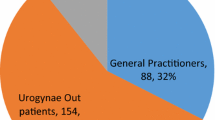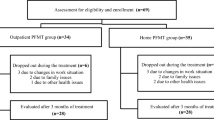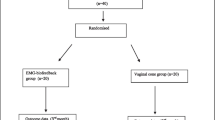Abstract:
The aim of the study was to evaluate the efficacy of pelvic floor training with EMG-controlled home biofeedback in the treatment of stress and mixed incontinence in women. Subjects were recruited from the urodynamic outpatient clinic and performed pelvic muscle training with an EMG-controlled biofeedback device for 20 minutes daily for 6 months. The number of pads used per day, the number of incontinence and urgency episodes, voiding frequency, maximum urethral closure pressure, functional urethral length and pressure/transmission ratio during stress were assessed before and after treatment. Thirty-three patients (13 with stress and 20 with mixed incontinence) completed the study. There was a significant decrease in the number of pads used per day, the number of incontinence and urgency episodes, and the voiding frequency. Twenty-eight patients (85%) reported that they were cured or improved. Urodynamic parameters did not change significantly. It was concluded that home pelvic floor training with EMG-controlled biofeedback is efficient in 85% of patients in alleviating the symptoms of genuine stress and mixed incontinence without causing side effects.
Similar content being viewed by others
Author information
Authors and Affiliations
Additional information
Rights and permissions
About this article
Cite this article
Hirsch, A., Weirauch, G., Steimer, B. et al. Treatment of Female Urinary Incontinence with EMG-Controlled Biofeedback Home Training . Int Urogynecol J 10, 7–10 (1999). https://doi.org/10.1007/PL00004015
Issue Date:
DOI: https://doi.org/10.1007/PL00004015




